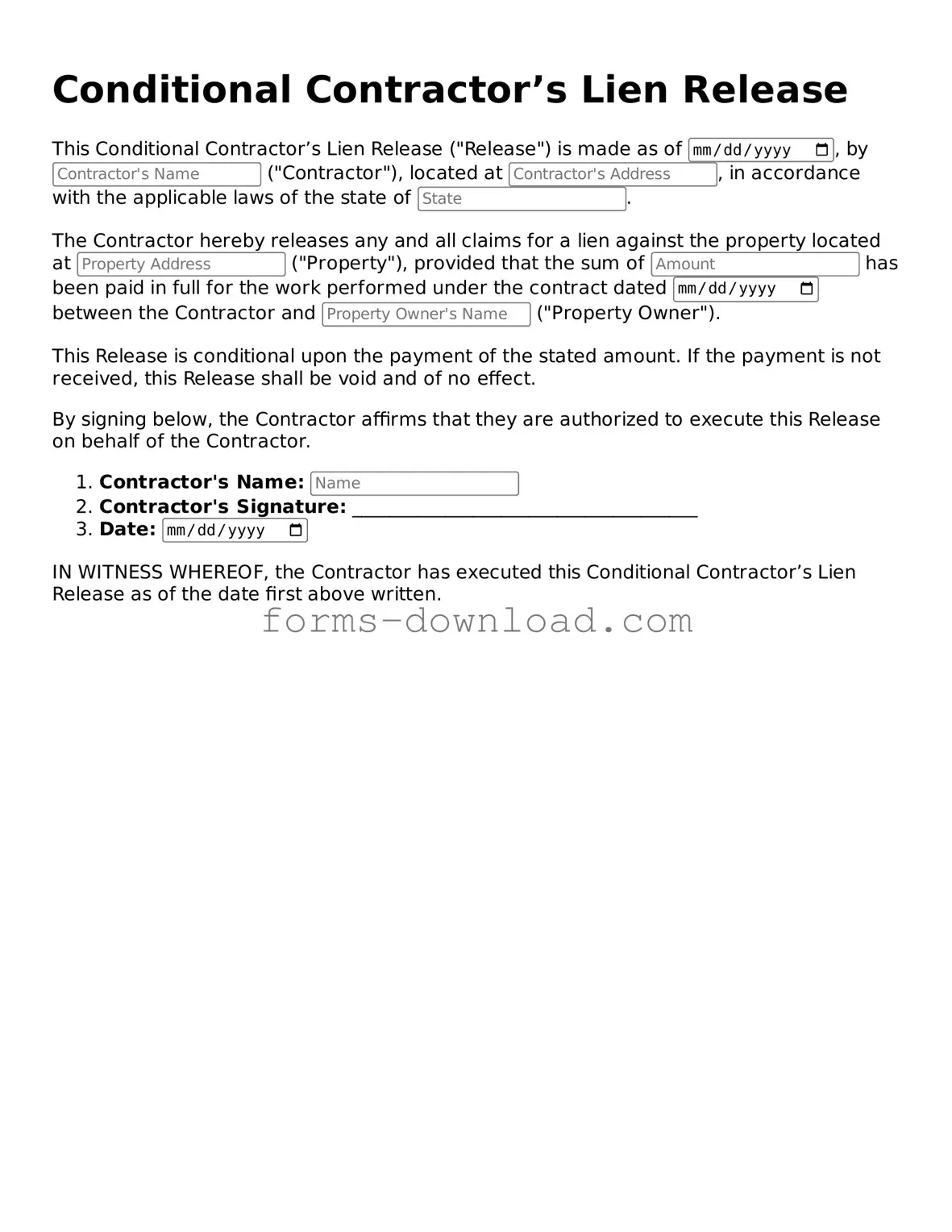Fillable Conditional Contractor’s Lien Release Form
The Conditional Contractor’s Lien Release form is a crucial document used in construction projects to ensure that contractors and subcontractors receive payment for their work while protecting property owners from potential liens. This form releases the contractor's right to file a lien on the property, contingent upon receiving payment. Understanding how to properly use this form can save you time and prevent disputes, so be sure to fill it out by clicking the button below.
Launch Editor Now
